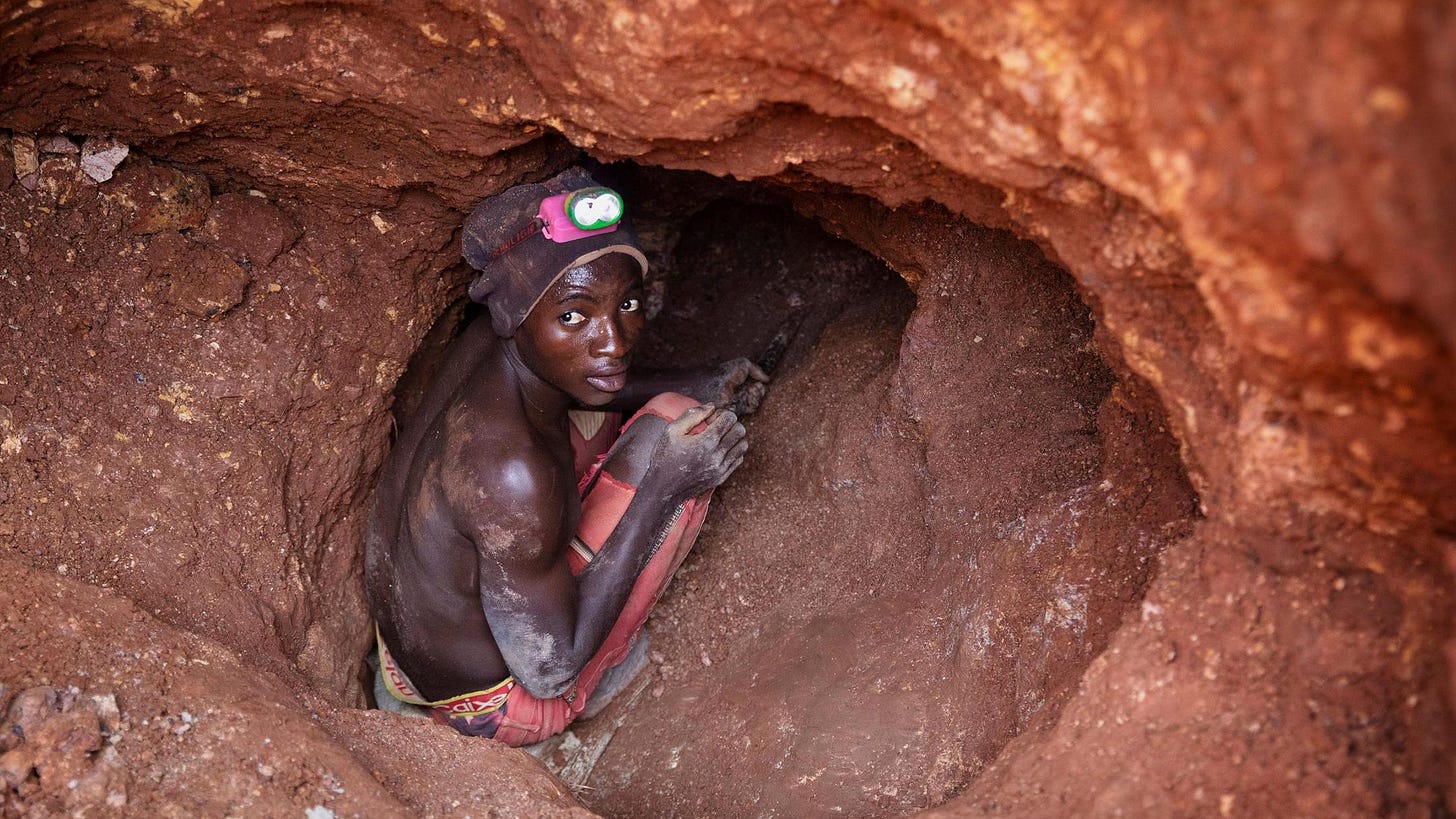Downstream destruction
The not-so-clean green transition, and the quest for securing critical minerals
King Leopold II never set foot in the Congo. There is something very modern about that, too, as there is about the bomber pilot in the stratosphere, above the clouds, who never hears screams or sees shattered homes or torn flesh.
Having rich biodiversity, fertile soil and abundant mineral resources seems like a boon, but not when you can’t defend it from the plunderers. That is the fate Congo has succumbed to. In a country that controls more than 70% of the world's cobalt supply, more than 70% of citizens live on less than $2 a day. Like a tiger pouncing on its prey, it is only natural for developed countries to exploit the resources of weaker nations like Congo in the name of development. The locals there say - “The world is materialistic first, and humanitarian only a century later. First they came for our rubber, then copper, and now it’s cobalt.”
But what is it that makes cobalt a prized possession? One word - batteries. Cobalt is an essential input in batteries and other green technologies.
Importance of critical minerals
As we move away from fossil fuels, we’re accepting a necessary evil, one in which critical minerals such as cobalt, lithium, and rare earth elements form the building block of green technologies. Amongst critical minerals are a special group of these rare earth elements which are essential to energy transition. Rare earths are inputs into the world’s most powerful and efficient permanent magnets, found inside the electric motors and generators powering carbon-reducing technologies such as batteries and wind turbines. They’re essential to harness energy from movement or convert movement to energy.
Today, to say that the world could do without these magnets powered by rare metals, would be absolutely false. Our societies have been magnetised, and there’s no undo-ing it.
A thousand years hence, the telephone and the motion picture camera may be obsolete, but the principle of the rotating magnetic field will remain a vital, living thing for all time to come. (Nikola Tesla, 1928)
However, these rare earths helping us transition towards clean energy are anything but clean. They’re found in minute quantities alongside other abundant minerals such as iron and copper. Extracting and refining them is highly polluting and excessive mining has plagued the environment and societal health near the mines.
9 tonnes of rock needs to be purified to produce a kilogram of vanadium which is used to make steel alloys shock and corrosion resistant.
16 tonnes of rock needs to be purified to produce a kilogram of cerium which is used to make hydrophobic coatings for turbine blades.
50 tonnes of rock needs to be purified to produce a kilogram of gallium which is used in semiconductors, and mostly all electronics we see today.
1200 tonnes of rock needs to be purified to produce a kilogram of lutetium which despite having unique chemical and physical properties has had difficulties in penetrating commercial markets due to its rarity.
We’re at present, consuming about 2 billion tonnes of rare earths every year, the equivalent of more than 500 Eiffel Towers a day. The demand will rise exponentially and so will mining.
Digging for critical minerals
Congo, amongst other nations such as Myanmar and Indonesia, is an evidence of what modern slavery looks like. There are sites with children working in the mines and ‘freelance’ miners dodged into the mix with no safety standards. Cobalt concentrations in the urine of men working in cobalt mines was found to be up to 43 times higher than usual. The land in mining towns has degraded to the point where nothing grows anymore, the rivers contaminated to the point where the water can't even be used for non-potable needs.
It seems that the under-developed and developing nations have once again been colonized at the hands of developed countries. It’s not as if the developed countries don’t have deposits of critical minerals, but rather they’d outsource this polluting activity and turn a blind eye towards the inhumane practices if it serves their convenience.
But convenience comes at a cost.
Enter China.
In the second part of this blog post, learn more about how China is controlling the supply of critical minerals, how it came to be this way and what it means for the green transition?



